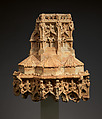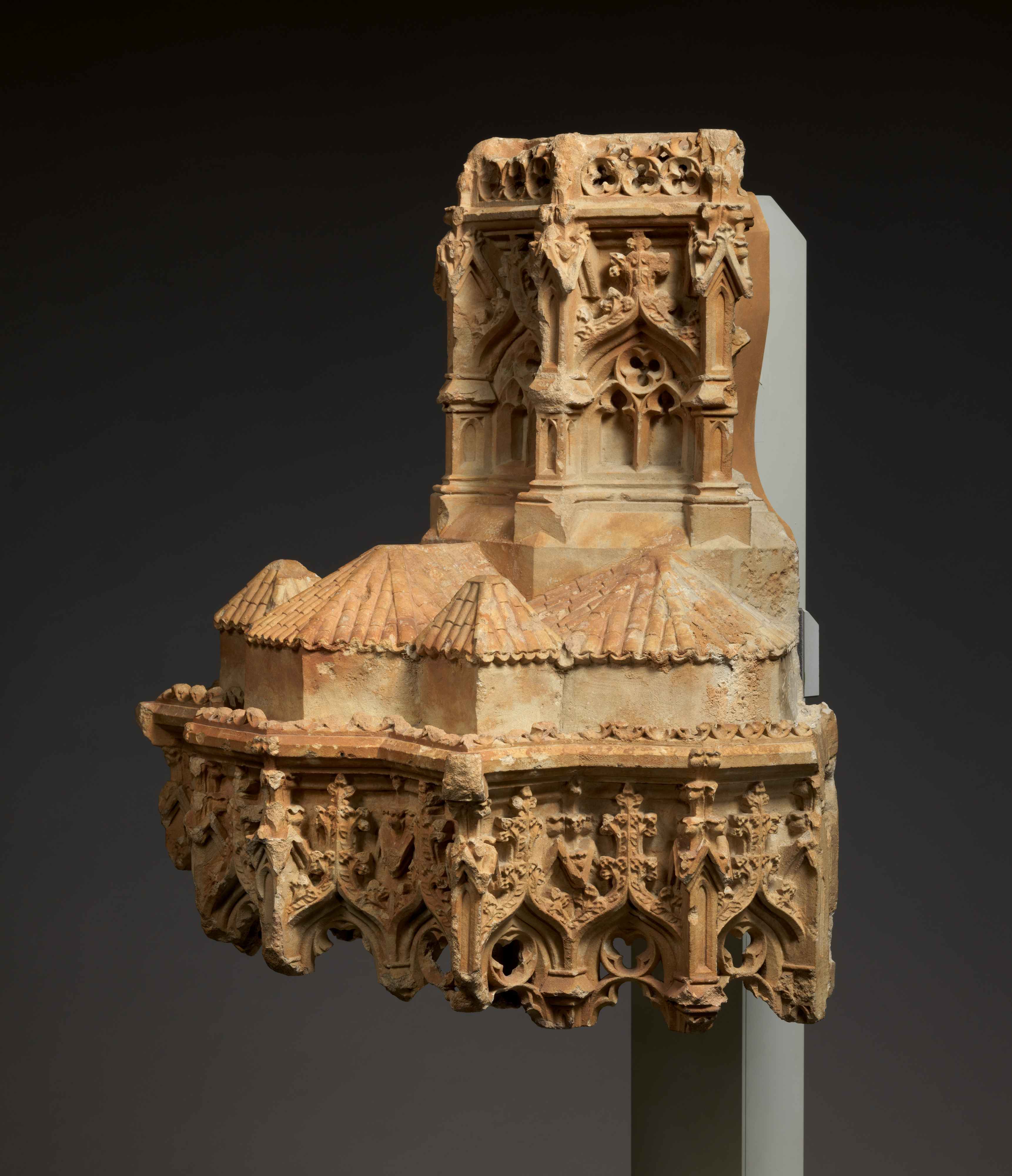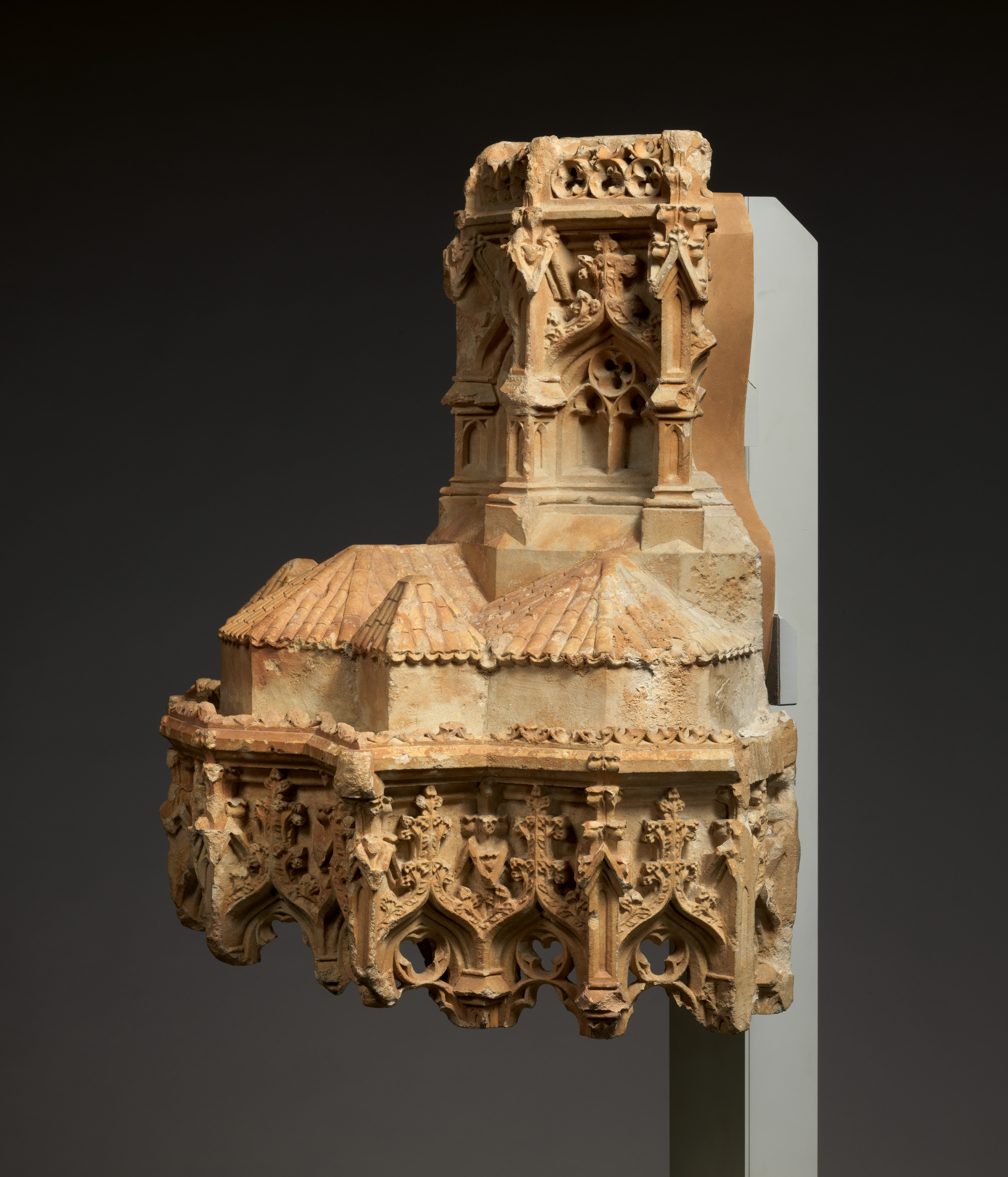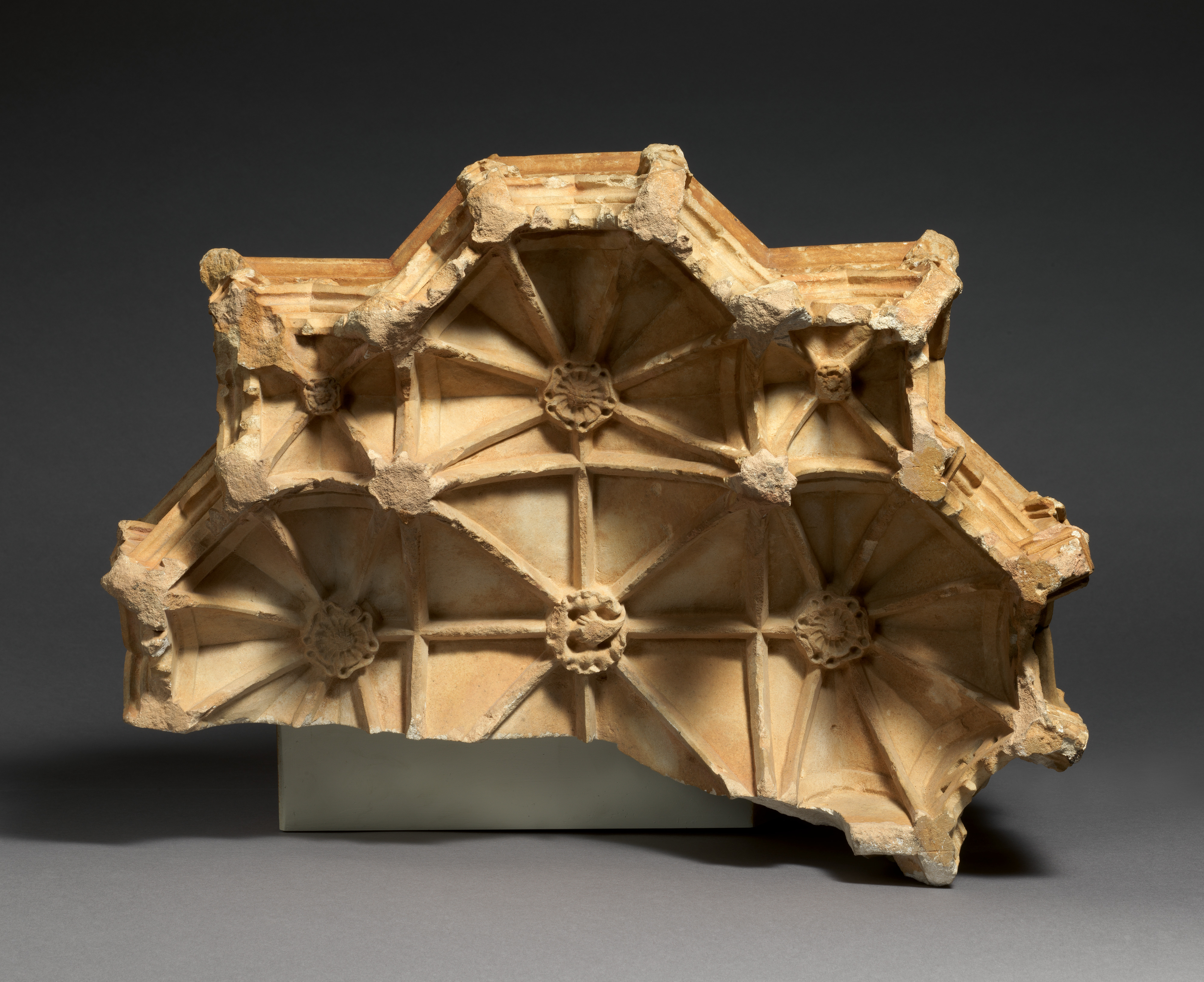Canopy
This architectural canopy comes from the Dominican monastery of Santa Maria da Vitória, Batalha, a major monument of Portuguese Gothic architecture. Commemorating a pivotal 1385 battle against neighboring Castile, this royal foundation served as the pantheon of Portuguese kings. The canopy decorated the monastery church’s magnificent west portal, where it originally surmounted the jamb statue of an apostle. During the late 19th century, restorers replaced the majority of the west portal’s medieval sculptures with copies. The canopy is one of a small group of originals to have left the site of Batalha. Exemplary of the portal’s intricate, high-quality carving, it provides insight into the inventive approaches of sculptors in medieval Portugal.
A row of simple tile-roof buildings makes a surprising addition to this otherwise ornate object. Canopies like this one often evoked the features of the grand structures they decorated, yet this example breaks from convention in acknowledging a humbler kind of building. What inspired this addition? Perhaps it originates with the master of works – the internationally-trained Master Huguet – and his workshop of sculptors. Huguet and his team creatively adapted cutting-edge developments in European architecture and sculpture, embellishing the church of Santa Maria with innovative and unexpected designs. The canopy’s tile roofs may result from this sustained interest in playing with the conventions of Gothic ornament. They could even pay homage to local styles of domestic architecture, which incorporate tile roofs even today. In so doing, the canopy seems to portray the church building, often described as a symbol of the heavenly Jerusalem, as an actual city filled with familiar urban dwellings.
This image cannot be enlarged, viewed at full screen, or downloaded.
This artwork is meant to be viewed from right to left. Scroll left to view more.








